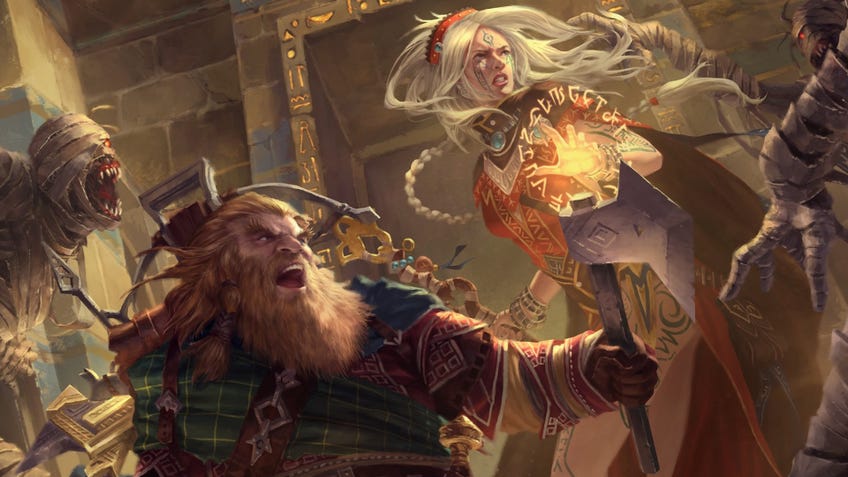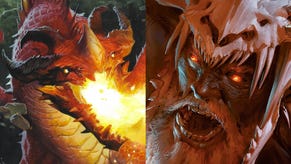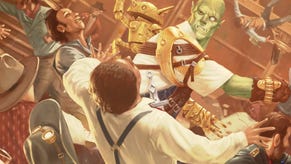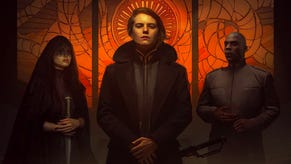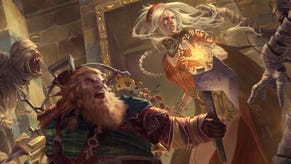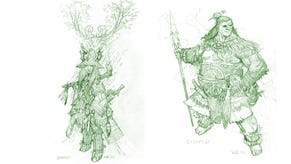How to play Pathfinder RPG: A beginner’s guide to 2E
Get started with the second edition of the fantasy roleplaying game.
Pathfinder is a rich and complex fantasy RPG that uses the same d20 ruleset at the core of Dungeons & Dragons. Players take on the role of heroic adventurers, often explorers and scholars employed by the Pathfinder Society, who travel the world solving problems, unravelling mysteries and collecting treasure. Characters are highly customisable and become more complex the longer you play, presenting players with escalating challenges as they must come up with the best ways to use their abilities to fight progressively more dangerous foes.
While game masters are always welcome to come up with their own adventures to fit their play group and style, Pathfinder publisher Paizo has released numerous Adventure Paths that provide multipart stories with epic conflicts across a wide variety of settings. These stories and their signature characters have also inspired comic books, novels, a deckbuilding card game and one video game, with a second in the works.
- How is Pathfinder 2E different from 1E?: The biggest changes and additions in second edition.
- How to make a character in Pathfinder 2E: Create your character by choosing their ancestry, heritage and feats.
- How to level up in Pathfinder: You're earned enough experience points to level up - what now?
- When do you roll in Pathfinder 2E?: The basics of when to roll your d20, and what to hope the result will be.
- How does combat work in Pathfinder 2E?: It's time to battle as we run through the rules for fighting.
- What can you do outside of fights in Pathfinder 2E?: Take a breather, explore the world of Golarion and meet NPCs.
- What do you need to play Pathfinder?: You know how to play, so now it's time to pick up the rulebooks and everything else you'll need.
Pathfinder was first released in 2009 to be compatible with Dungeons & Dragons 3E and 3.5 books, though both games have evolved significantly since then, with D&D maker Wizards of the Coast releasing 5E in 2014 and Pathfinder following with its own 2E in 2019.
While the two games are no longer compatible, their shared DNA will make many of Pathfinder’s rules and concepts familiar to Dungeons & Dragons players. Yet that shared experience can also cause confusion when it comes to places where Paizo has made big changes. If you haven’t played Dungeons & Dragons before, we recommend reading our guide on how to play D&D 5E first so you’ll know the basics of the d20 system and roleplaying before diving into learning what makes Pathfinder 2E different.
How is Pathfinder 2E different from 1E?
Pathfinder 2E combines aspects of the original Pathfinder, Dungeons & Dragons 4E and 5E, and dungeon-crawling board games for one of the richest tabletop roleplaying experiences around. Many of the game terms, classes and general mechanics are the same, and Paizo has retained its custom setting of Golarion: a vast world built from a mix of real-world mythology from numerous cultures, and tropes and creatures taken from works of fantasy, horror and even science-fiction.
Pathfinder 2E has a much more modular feel than 1E. Players have a lot of choices about how to shape their character as they level-up, and it’s easier than ever to combine aspects of different classes. Second Edition also streamlines the rules for exploration and how adventurers can spend their downtime. But the biggest change is the three-action system, a new way of codifying what characters can do on their turns.

How to make a character in Pathfinder 2E
Pathfinder 2E abandons the problematic rules for character races found in Dungeons & Dragons - and, by extension, Pathfinder 1E - by having players pick an ancestry and heritage to define traits common to their culture and the part of Golarion where they are from. Your choice of ancestry - such as human, elf or goblin - determines your starting hit points, base size, speed and choice of ability boosts and languages, while heritages such as half-orc, arctic elf and irongut goblin give you additional abilities, such as low-light vision, cold resistance or the power to eat just about anything without getting ill. These choices are made at first level and cannot be undone.
Players also choose a background which represents their life experiences before they became an adventurer, such as working as a miner or living as a hermit. These choices also boost ability scores, and give the character training in relevant skills and a feat associated with one of those skills.
You’ll also choose a class from a list that largely spans the core Dungeons & Dragons selection, though there are a few changes. For example, the Champion class incorporates the traditional Lawful Good paladin but also any warrior who serves a deity regardless of their morality. Pathfinder 2E also offers four unique classes:
- Alchemists experiment with science to create explosive bombs and elixirs they can use to heal or enhance themselves.
- Investigators study their enemies and the world around them and use their insights to solve mysteries and figure out the best ways to defeat their foes.
- Oracles wield raw divine power that allows them to cast powerful spells, but they suffer from a curse that grows more burdensome the more they draw upon their abilities.
- Swashbucklers are nimble and charming warriors who belittle and outwit their foes as they maneuver around the battlefield.
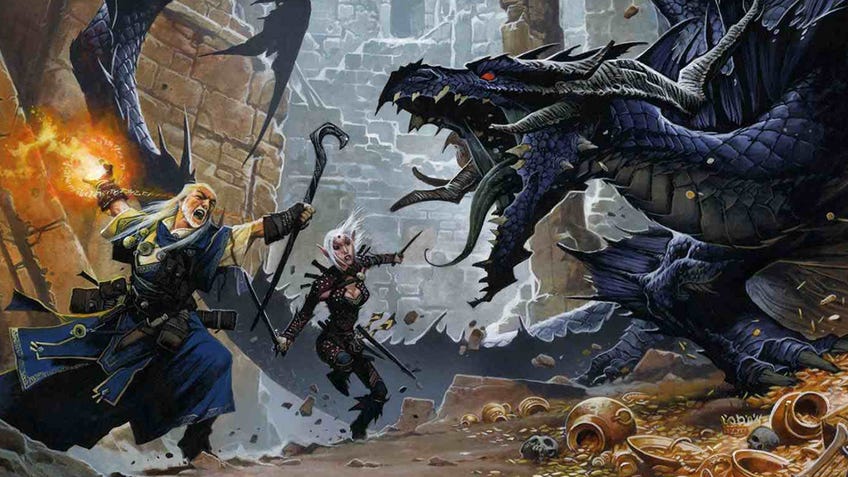
How to level up in Pathfinder
Much like in other d20 games, Pathfinder characters earn experience points for winning fights and successfully completing other challenges. Every time they earn 1,000 experience points, they gain a level, eventually maxing at 20. Gaining a level makes your character more powerful in a variety of ways.
Most levelling in Pathfinder 2E involves choosing feats. There are many more of these in 2E than there were in 1E, but they tend to be less powerful. Every odd level, characters gain a general feat that represents something they can do regardless of their class or ancestry, such as moving faster or having more hit points. Characters also improve their skills at odd levels, gaining the chance to learn an entirely new skill or increase their proficiency in something they already know.
On even levels, players gain a class feat and skill feat. Class feats allow different characters of the same class to still feel very different. While all barbarians can fly into a rage that makes them more powerful combatants for a short period of time, depending on the feats they take they might have keener senses while raging or be able to frighten their enemies. Skill feats enhance what you can do with a skill you are trained in, so someone who already knows the basics of survival might learn how to effectively gather enough food to feed their adventuring party.

Every four levels, characters gain an ancestry feat, indicating things they are naturally good at or have learned from experience. These include feats such as Gnome Polyglot, the ability to learn extra languages because of their passion for education and regular interaction with other cultures.
The modularity of the system makes it easy to customise characters. You can use your general feats to multiclass, gaining progressively more powers and feats associated with a different class with every multiclass feat you take. You can also combine ancestries, picking a heritage like tiefling or dhampir to indicate your dwarf or halfling is partially demonic or tainted by death. How much you want to embrace that aspect of your character rather than leaning into your base ancestry will be determined by the feats you choose as you level.
Many of these choices build upon one another. For instance, if a druid takes a class feat at level one that gives them an animal companion, they’ll have access to feats later on that let them make that companion more powerful. When making decisions for creating and levelling your character, it’s always a good idea to look ahead and envision how your character will change as they advance.
When do you roll in Pathfinder 2E?
The result of most of the actions you take in Pathfinder 2E is determined by rolling a d20. In the majority of d20 games such as Dungeons & Dragons, rolling a 20 results in a critical hit, which gives you something better than a normal success, while rolling a 1 is a critical failure, which means you do exceptionally poorly. Pathfinder 2E widens that range substantially to make actions both more powerful and riskier.
Everything you do from attacking an enemy to resisting the effects of a necromancer’s spell to scaling a cliff has a difficulty associated with it. If your roll beats that difficulty by 10 or more, it is a critical success and has some extra effect - such as hitting harder, ignoring the spell’s effects entirely or climbing especially fast. Rolling 10 below your target results in a critical failure. While there’s no penalty for critically missing on an attack - doing nothing with your action is punishment enough - critically failing when targeted by a spell makes its effects worse and an exceptionally poor roll while trying to climb could make you fall flat on your back.

How does combat work in Pathfinder 2E?
Fights in Pathfinder 2E revolve around the three-action system. Every turn, your character can take three actions, though some things you want to do will actually consume more than one of those actions. A single action is a basic activity such as moving your character’s speed or attacking with the weapon you have in your hand. It can take two actions to do something complicated, such as a cleric channelling their divine magic into a weapon attack because they are effectively both casting a spell and making a strike, which would each cost one action. Some very powerful abilities, like a fighter using whirlwind strike to attack every enemy in reach of their blade, cost all three actions.
The power of spells is often based on how many actions it takes to cast them. The vast majority take two actions, indicating your caster must both speak words of power and make gestures to shape the magic. Some very powerful spells, such as conjuring a blade barrier to damage anyone who tries to pass through it, also require you to expend material spell components and thus cost three actions. Spells with a niche effect, such as increasing how far you can jump, might only take one action. Some spells, such as heal, can cost a variable amount based on how much power and focus you want to put into it, with the one-action version just healing a single person near you while the three-action heals everyone within 30 feet.
These actions can be combined however you see fit; you can take all three actions to move into position if you started the fight too far away, or move up, cast a spell and then attack. Variety is the spice of life. If you decide to make multiple attacks in a turn, you’ll take progressively worse penalties. It might still be the right thing to do, but it makes you think about other options at your disposal.
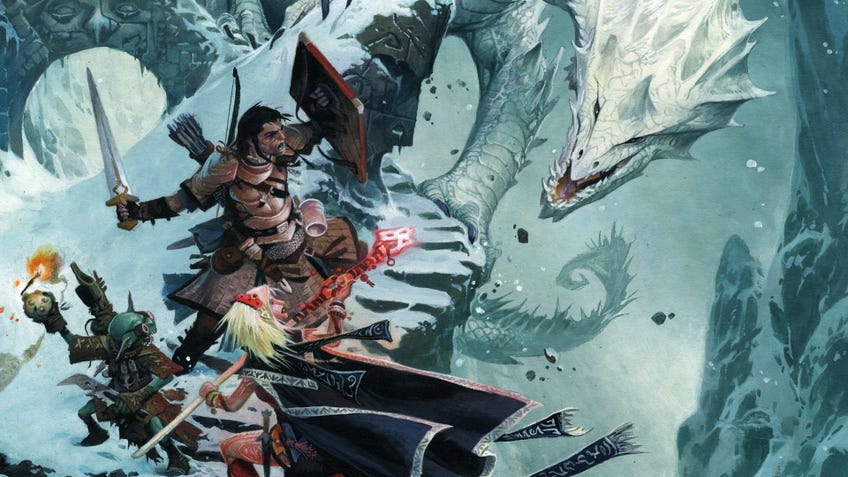
What can you do outside of fights in Pathfinder 2E?
Epic battles are an important part of Pathfinder 2E, but players will also spend plenty of time exploring the world and living in it between adventures. While combat actions take a matter of seconds and are fast-paced, life or death affairs, Pathfinder 2E also has rules for abstracting longer periods of time while exploring unfamiliar terrain or hanging out in town.
You shouldn’t rush these times, as they provide opportunities for characters to get to know each other and the non-player characters around them, learn how they’re shaping the story and build connections to the setting. But the rules help codify some things that will make players feel good about their skills and abilities without getting bogged down. For instance, instead of a rogue having to roll over and over again to check every corner of a dungeon for traps, a player can just declare they’re searching an area and the game master lets them know how long it takes while making secret checks to determine what they find. Similarly, if faced with a dangerous obstacle like a frozen lake, the member of the party who is best at dealing with the hazard can make a series of skill checks while the rest of the party follows their lead, gaining bonuses to their own checks based on the success of the player forging the way.
There are also guidelines for spending downtime, letting characters rest and recover from any injuries or nasty effects they picked up while adventuring and take the time to craft useful equipment or make some money working a job. If circumstances within the game change and you decide you want to take your character in a different direction than you initially planned, you can also use some of this time to retrain, changing some feats and skills to reshape your character.
What do you need to play Pathfinder?
All you need to play the game is the Pathfinder: Second Edition Core Rulebook, though having a few additional books like the Lost Omens Character Guide and Advanced Player’s Guide will give you some more options. Of course, having more options can feel like a bad thing if you already don’t know what you want to play!
If you’re preparing to play Pathfinder 2E, talk to your game master about what their plans are. Different character concepts will work better depending on the setting, tone and power level of the game. A game master will also help explain any rules you don’t understand both when building a character and when actually playing.
There are a lot of rules to keep track of in Pathfinder 2E, but they will become intuitive as you play more. Focus on what you want your character to be good at and you’ll have an easier time picking out the feats, skills and powers or spells that will make that happen. Talk to your fellow players to make sure you have a diverse and complementary skill set both at the start of the game and as you level. Once you have the basics down, you can enjoy all the fun of charting your own path.
